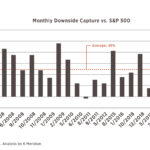What would be the financial consequences to you if your house burned down tomorrow? What if someone slipped and fell on your property, became disabled, and won a lawsuit against you? How much could you afford to pay out of pocket for these types of unexpected expenses?
If you fear or don’t know the answers to these questions, you are not alone. Despite the great risk of being underinsured, many property owners, including those with significant assets, lack sufficient coverage. Some view the risks as too low to justify the expense. Others simply lack awareness or the time needed to put the right policies in place. Even among those who have recognized and sought protection, many have undervalued their property, failed to report upgrades, or insured their property’s cash value instead of its replacement value.
To help you protect against the unexpected — without becoming overwhelmed by what can be the somewhat daunting and confusing realm of insurance offerings — here is an overview of the space and action steps for pursuing the right policies for you.
Expecting the Unexpected
The risks that property and casualty insurance protect against might be more probable than you think.
- Over a 10-year period (2014-2023), there was an average of 367,460 residential building fires that were reported. Fires in 2023 alone were estimated to have incurred $11,266,200,000 in property damage.1
- In 2024, there were at least 27 weather-related disasters in the U.S. that exceeded $1 billion in losses.2
- Weather-related disasters resulting in more than a billion dollars of damage are on the rise: In the 2010s (2010-2019), there was an average of 13.1 weather disasters each year. Now, in the 2020s, we have already reached an average of 23.0 per year, and we are only halfway through the decade.3
- There were 227,039 unintentional injuries leading to death in the U.S. in 2022, the third-leading cause of death for that year.4 Globally, there were an estimated 18,100 natural disaster-related deaths in 2024.5
Property and Casualty Insurance Overview
When it comes to protecting your assets with property and casualty insurance, significant customization is available. Although they’re typically bundled into one “umbrella” policy, P&C insurance can include homeowner’s insurance, automobile insurance, and power sports insurance, among others.
Here is a breakdown of the most common insurance options available to you.
Homeowners Insurance: Homeowner’s insurance helps protect your home and belongings from the perils of theft, natural disasters, and accidental damage. You often have the option to include liability coverage in your policy. This protects you financially should you be found responsible for someone else’s injury or damage to their property.
Automobile Insurance: Automobile insurance exists to protect your vehicle(s) from damage and protect you in the event of an accident. It can do this in a variety of ways, depending on which types of coverage you choose. Most states require drivers to carry liability coverage, while some auto lenders might also require collision coverage.
Condo Insurance: Similar to homeowner’s insurance, condo insurance is meant to protect your dwelling from damage, and it often includes a form of liability protection. Unlike a homeowner’s policy, condo insurance protects only against damage to the interior of the unit. Be sure to consult your condo association’s policy to determine what’s already covered.
Renter’s Insurance: Renters insurance is also similar to homeowner’s insurance. It protects a tenant’s personal belongings and provides liability coverage for a rented property. The policy does not cover the physical structure of the building but rather covers damage to personal property. Some landlords may require you to have renters insurance and will include the condition within the lease agreement.
Power Sports Insurance: Among the assets covered by these specialized policies are boats, golf carts, and recreational vehicles like snowmobiles and ATVs. Common power sports policies will help cover damage to the vehicle and provide liability protection in case you’re found liable for injury to another.
Art, Jewelry, and Collectibles Insurance: Art and collectibles may not always be fully covered by your homeowners policy. To be sure they are entirely insured, you may need to add them as a “rider” to your policy. However, not all insurers will offer this option.
Next Steps
You do not need to navigate the realm of insurance alone. A licensed financial advisor can help you identify your individual needs and address them with the right insurance products. To start:
- Gather information on your current policies.
- Reach out to your financial advisor, who can coordinate with insurance specialists/agents as needed.
- Prepare to share your entire balance sheet and discuss your holistic financial goals, which should serve as the foundation for all financial planning strategies, including managing risk through proper insurance coverage.
- Residential fire estimate summaries (2014-2023). (n.d.). U.S. Fire Administration. Retrieved April 15, 2025, from https://www.usfa.fema.gov/statistics/residential-fires/
- Assessing the U.S. climate in 2024. (2025, February 28). National Centers for Environmental Information (NCEI). https://www.ncei.noaa.gov/news/national-climate-202413
- NCEI.Monitoring.Info@noaa.gov. (n.d.). Billion-Dollar Weather and Climate Disasters | National Centers for Environmental Information (NCEI). Retrieved April 15, 2025, from https://www.ncei.noaa.gov/access/billions/
- FastStats. (n.d.). Accidents or Unintentional Injuries. Retrieved April 15, 2025, from https://www.cdc.gov/nchs/fastats/accidental-injury.htm
- Statista. (2025, February 11). Global number of deaths from natural disasters 2000-2024. https://www.statista.com/statistics/510952/number-of-deaths-from-natural-disasters-globally/


